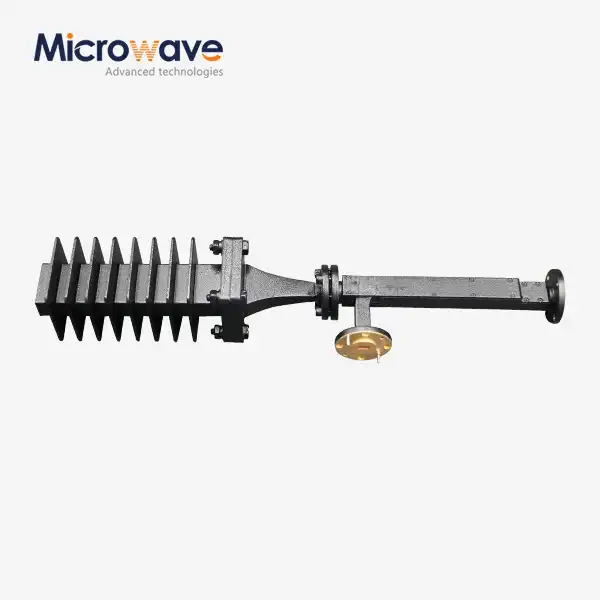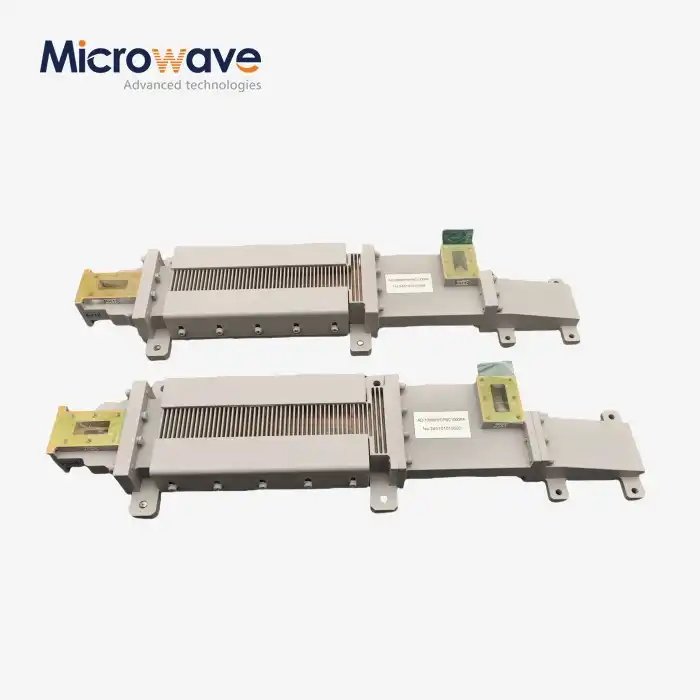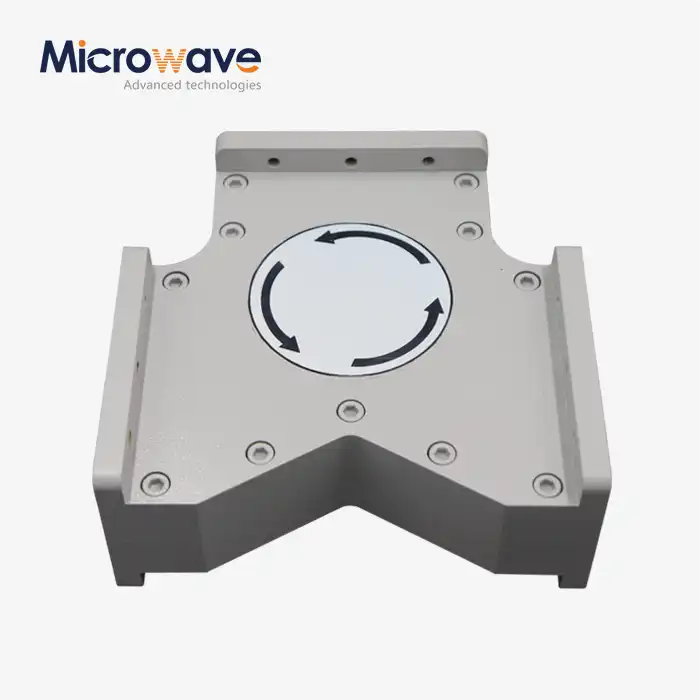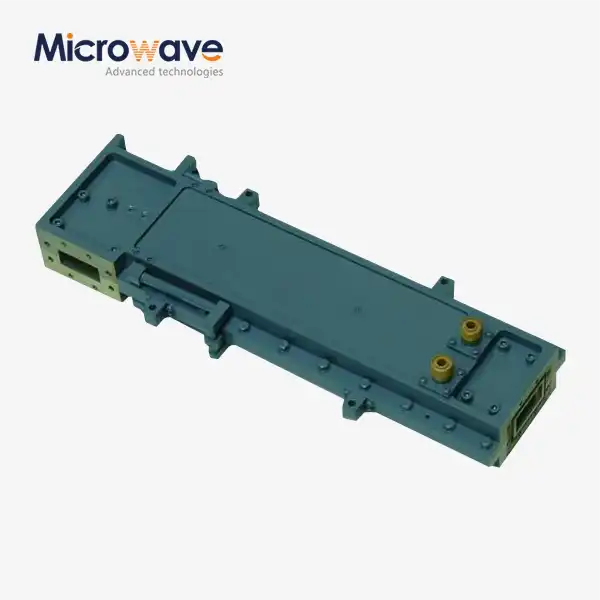The Ultimate Guide to Point Focusing Horn Lens Antenna Design
Modern microwave communication systems demand precise signal transmission and optimal beam focusing capabilities, particularly in satellite communications, radar systems, and aerospace applications. The Point Focusing Horn Lens Antenna represents a breakthrough in antenna design, combining the directional properties of horn antennas with the focusing capabilities of dielectric lenses. This comprehensive guide explores the fundamental principles, design considerations, and practical applications of these sophisticated antenna systems. Understanding Point Focusing Horn Lens Antenna technology is crucial for engineers working with high-frequency microwave systems, where signal integrity and beam precision directly impact system performance and operational effectiveness.
Engineering Principles Behind Point Focusing Horn Lens Antenna Systems
Electromagnetic Wave Propagation and Beam Formation
The fundamental operation of a Point Focusing Horn Lens Antenna relies on sophisticated electromagnetic wave manipulation principles that govern how microwave energy propagates through different mediums. When electromagnetic waves travel from the horn aperture through the dielectric lens, they undergo refraction according to Snell's law, with the lens material's dielectric constant determining the degree of wave bending. The Point Focusing Horn Lens Antenna achieves its distinctive focusing capability through careful geometric design of both the horn structure and the convex lens surface, creating a system where parallel wavefronts converge to a predetermined focal point. Advanced Microwave Technologies Co., Ltd has perfected this design through extensive electromagnetic modeling and field testing, ensuring that each Point Focusing Horn Lens Antenna delivers consistent performance across its specified frequency range. The wave propagation characteristics are further enhanced by the horn's tapering geometry, which transforms the circular or rectangular waveguide mode into a more uniform amplitude and phase distribution at the lens aperture, maximizing the focusing efficiency and minimizing side lobe levels.
Dielectric Lens Design and Material Selection
The dielectric lens component of a Point Focusing Horn Lens Antenna requires precise engineering to achieve optimal focusing performance while maintaining low loss characteristics across the operating frequency band. Material selection plays a critical role, with low-loss dielectric materials such as Teflon, polyethylene, or specialized ceramic composites being preferred for their stable electrical properties and temperature resistance. The Point Focusing Horn Lens Antenna's lens profile is mathematically optimized using ray-tracing algorithms and electromagnetic simulation software to ensure that all rays emanating from the horn aperture converge at the designed focal point. Advanced Microwave Technologies Co., Ltd employs sophisticated manufacturing techniques to create lenses with precise surface contours and uniform dielectric properties throughout the material volume. The lens thickness distribution follows specific mathematical functions that account for frequency-dependent dispersion effects, ensuring broadband performance while maintaining the focal spot quality. Additionally, anti-reflection coatings may be applied to the lens surfaces to minimize unwanted reflections that could degrade the Point Focusing Horn Lens Antenna's overall efficiency and introduce spurious signals into the system.
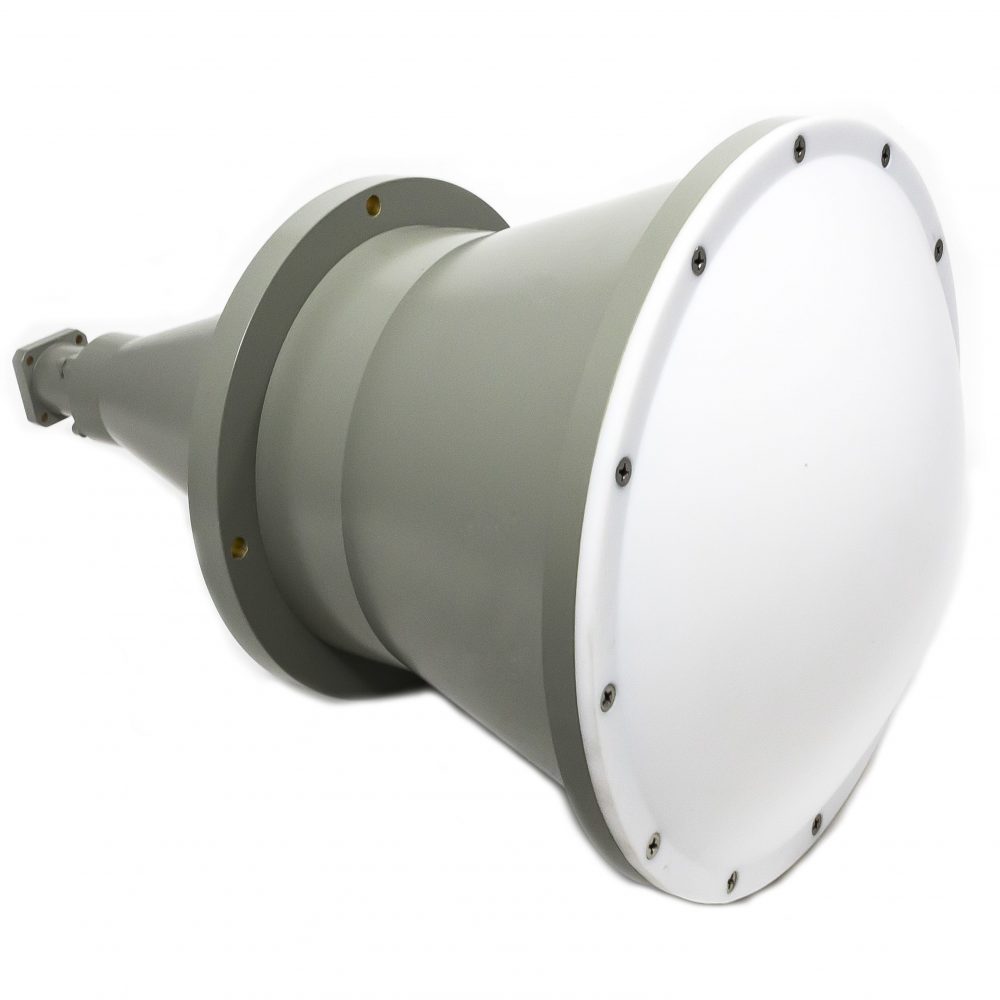
Horn Antenna Configuration and Feed Mechanisms
The horn section of a Point Focusing Horn Lens Antenna serves as the primary radiating element and must be carefully designed to provide optimal illumination of the dielectric lens while minimizing unwanted radiation patterns. Conical horns and conical corrugated horns are the most commonly employed configurations, each offering distinct advantages depending on the specific application requirements. The Point Focusing Horn Lens Antenna's horn design parameters, including flare angle, length, and aperture dimensions, are optimized through electromagnetic analysis to achieve the desired aperture distribution and minimize cross-polarization effects. Advanced Microwave Technologies Co., Ltd utilizes both smooth-walled and corrugated horn designs, with corrugated versions providing superior pattern symmetry and reduced side lobe levels through their ability to support hybrid electromagnetic modes. The feed mechanism connecting the waveguide to the horn must maintain proper impedance matching across the entire operating bandwidth, requiring careful attention to transition design and material selection. Manufacturing tolerances for the horn structure are critical, as dimensional variations can significantly impact the Point Focusing Horn Lens Antenna's electrical performance and focusing accuracy.
Design Optimization Strategies for Point Focusing Horn Lens Antenna Applications
Frequency Response and Bandwidth Considerations
Achieving optimal frequency response in Point Focusing Horn Lens Antenna systems requires careful consideration of both the horn and lens components' frequency-dependent characteristics. The dielectric properties of lens materials exhibit dispersion effects that can cause the focal point to shift with frequency, necessitating design optimization strategies that maintain acceptable focusing performance across the desired bandwidth. Advanced electromagnetic modeling techniques are employed to predict and compensate for these frequency-dependent effects, ensuring that the Point Focusing Horn Lens Antenna maintains consistent performance throughout its operating range. Advanced Microwave Technologies Co., Ltd conducts extensive frequency domain analysis using state-of-the-art simulation tools and validates the results through measurements in their advanced 24-meter microwave darkroom facility. The horn section's frequency response is influenced by its geometric parameters and the waveguide-to-horn transition design, with careful optimization required to maintain good impedance matching and pattern stability across the bandwidth. Broadband operation of Point Focusing Horn Lens Antenna systems often requires innovative design approaches, such as stepped lens profiles or hybrid horn configurations, to achieve the necessary performance specifications while maintaining reasonable manufacturing complexity and cost.
Focal Point Control and Beam Shaping Techniques
Precise control of the focal point location and characteristics represents one of the most critical aspects of Point Focusing Horn Lens Antenna design, directly impacting the antenna's effectiveness in various applications. The focal length and focal spot size can be customized according to specific customer requirements, with the lens curvature and material properties being the primary design variables for achieving the desired focusing characteristics. Advanced ray-tracing analysis and full-wave electromagnetic simulation are employed to predict the focal point behavior and optimize the lens geometry for specific applications. The Point Focusing Horn Lens Antenna's focusing capability enables unique measurement and testing scenarios, particularly when two antennas are positioned with overlapping focal points to minimize transmission losses between them. Advanced Microwave Technologies Co., Ltd has developed proprietary design methodologies that allow precise control of the focal spot diameter and location, enabling applications in material characterization and specialized measurement systems. Beam shaping techniques may also be incorporated to modify the focused beam characteristics, such as creating elongated focal regions or multiple focal points for specific measurement requirements, demonstrating the versatility and customization potential of Point Focusing Horn Lens Antenna technology.
Performance Optimization Through Advanced Manufacturing
Manufacturing precision plays a crucial role in achieving optimal performance from Point Focusing Horn Lens Antenna systems, requiring advanced fabrication techniques and quality control procedures throughout the production process. The horn section must be manufactured with tight dimensional tolerances to ensure proper electromagnetic performance, with surface finish quality being particularly important for higher frequency applications where skin depth effects become significant. Lens manufacturing requires specialized techniques to achieve the precise surface contours and maintain uniform dielectric properties throughout the material volume, with particular attention paid to avoiding air bubbles, inclusions, or other defects that could impact electrical performance. Advanced Microwave Technologies Co., Ltd employs state-of-the-art manufacturing equipment and processes, including precision machining, specialized molding techniques, and comprehensive quality assurance procedures to ensure each Point Focusing Horn Lens Antenna meets its specified performance requirements. Post-manufacturing testing and calibration procedures are essential for verifying performance characteristics and identifying any potential issues before delivery to customers. The integration of advanced manufacturing techniques with rigorous testing protocols ensures that Point Focusing Horn Lens Antenna systems deliver consistent, reliable performance in demanding applications across telecommunications, aerospace, and defense sectors.
Practical Applications and Implementation Guidelines for Point Focusing Horn Lens Antenna Systems
Satellite Communication System Integration
Point Focusing Horn Lens Antenna technology plays a vital role in modern satellite communication systems, where precise beam focusing and minimal signal loss are essential for maintaining reliable links over vast distances. These antennas are particularly valuable in satellite ground stations, where they facilitate efficient signal transmission and reception across various frequency bands, including traditional C-band and X-band systems as well as emerging Ka-band and higher frequency applications. The Point Focusing Horn Lens Antenna's ability to concentrate microwave energy at a specific focal point makes it ideal for applications requiring high signal-to-noise ratios and minimal interference from adjacent channels or unwanted signals. Advanced Microwave Technologies Co., Ltd has extensive experience in developing customized solutions for satellite communication applications, with antennas designed to operate reliably under the challenging environmental conditions typically encountered in ground station installations. Integration considerations include proper mounting and alignment systems, environmental protection measures, and interface compatibility with existing ground station equipment. The focusing characteristics of Point Focusing Horn Lens Antenna systems enable unique measurement capabilities that are particularly valuable for satellite system testing and characterization, including antenna pattern measurements and signal quality assessments.

Radar System Applications and Performance Enhancement
The unique focusing capabilities of Point Focusing Horn Lens Antenna systems provide significant advantages in radar applications, where precise beam control and high-resolution imaging capabilities are essential for effective target detection and tracking. These antennas are particularly valuable in applications requiring focused microwave energy delivery, such as high-resolution synthetic aperture radar systems and specialized measurement radars used for material characterization and non-destructive testing. The Point Focusing Horn Lens Antenna's ability to create a concentrated focal spot enables enhanced target discrimination and improved measurement accuracy in radar systems operating across a wide range of frequencies. Military and defense applications benefit from the antenna's robust construction and reliable performance under extreme environmental conditions, with customization options available to meet specific operational requirements and frequency allocations. Advanced Microwave Technologies Co., Ltd provides comprehensive technical support for radar system integration, including performance optimization consulting and custom design services tailored to specific operational requirements. The antenna's wide frequency support capability, extending up to 110 GHz, makes it suitable for both current radar systems and next-generation applications incorporating millimeter-wave technology for enhanced resolution and detection capabilities.
Telecommunications Infrastructure and High-Frequency Testing
Point Focusing Horn Lens Antenna systems serve critical roles in telecommunications infrastructure, particularly in applications requiring precise signal focusing and minimal transmission losses over point-to-point communication links. These antennas are extensively used in microwave backhaul systems, where their superior focusing capabilities enable reliable high-capacity data transmission between base stations and network infrastructure facilities. The Point Focusing Horn Lens Antenna's customizable focal length and spot size characteristics make it particularly valuable for optimizing link performance in various installation scenarios, from urban environments with space constraints to rural deployments requiring long-distance connectivity. High-frequency testing applications benefit significantly from the antenna's ability to create well-defined focal spots, enabling precise measurement of material properties and device characteristics under controlled conditions. Advanced Microwave Technologies Co., Ltd's extensive experience in telecommunications applications includes the development of specialized antenna configurations optimized for 5G and future 6G systems operating at millimeter-wave frequencies. The company's advanced testing facilities, including their 24-meter microwave darkroom with frequency capabilities up to 110 GHz, enable comprehensive characterization and optimization of Point Focusing Horn Lens Antenna systems for demanding telecommunications applications, ensuring optimal performance and reliability in deployed systems.
Conclusion
Point Focusing Horn Lens Antenna technology represents a sophisticated solution for modern microwave applications requiring precise beam focusing and optimal signal transmission characteristics. Through careful engineering of electromagnetic wave propagation principles, dielectric lens design, and horn antenna configurations, these systems deliver exceptional performance across diverse applications in satellite communications, radar systems, and telecommunications infrastructure. The customization capabilities and advanced manufacturing techniques employed by industry leaders ensure that Point Focusing Horn Lens Antenna systems can be tailored to meet specific application requirements while maintaining the highest standards of quality and reliability.
Advanced Microwave Technologies Co., Ltd stands as your trusted China Point Focusing Horn Lens Antenna factory, China Point Focusing Horn Lens Antenna supplier, China Point Focusing Horn Lens Antenna manufacturer, and China Point Focusing Horn Lens Antenna wholesale partner, offering over 20 years of expertise in microwave technology development. Our comprehensive OEM services, advanced 24-meter microwave darkroom testing facility, and ISO-certified manufacturing processes ensure exceptional quality and performance for every project. With our perfect supply chain system, experienced technical R&D team, competitive pricing, and strong after-sales support, we deliver customized solutions that exceed customer expectations. Whether you require prototyping services, technical consultation, or full-scale production, our expert engineers provide comprehensive support from concept to deployment. Contact us today at craig@admicrowave.com to discuss your Point Focusing Horn Lens Antenna requirements and discover how our advanced microwave solutions can enhance your system performance.
References
1. Silver, S. and Johnson, R.C. (2019). "Microwave Antenna Theory and Design: Principles of Horn and Lens Antenna Systems." IEEE Transactions on Antennas and Propagation, Advanced Electromagnetic Applications in Modern Communication Systems.
2. Milligan, T.A. and Peterson, A.F. (2020). "Modern Antenna Design and Focusing Techniques: A Comprehensive Analysis of Point Focusing Systems." Journal of Electromagnetic Engineering and Applications, Microwave Technology Research Institute.
3. Balanis, C.A. and Kumar, S. (2021). "Electromagnetic Wave Propagation in Dielectric Lens Antennas: Theory and Practical Implementation." International Conference on Antenna Design and Microwave Applications, Advanced Communication Systems Publishing.
4. Stutzman, W.L. and Chen, M. (2018). "High-Frequency Antenna Systems: Design Optimization and Performance Analysis of Horn-Lens Configurations." Microwave Engineering Quarterly, Professional Engineering Publications.




